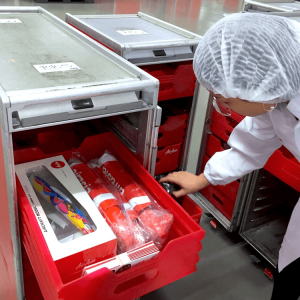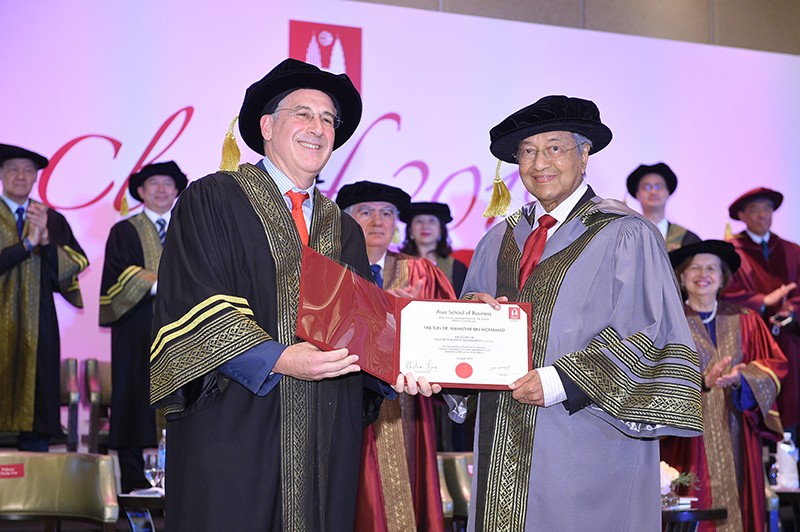KUALA LUMPUR: If you want a window, or a gateway even, into Southeast Asia, try Asia School of Business (ASB). Those are the sentiments of ASB’s recent MBA graduates Jack Farrell and Gary Liao, who have just completed their 20-month residential course in Kuala Lumpur. Farrell, an American entrepreneur, had the opportunity to conduct ASB’s signature Action Learning projects across the region in Ho Chi Minh City, Bangkok, Penang, Ipoh and Kuala Lumpur. “The opportunity to do work and business in all these different markets is truly an eye-opener,” said Farrell.
ASB is a premier global business school founded by Malaysia’s central bank, Bank Negara, and the United States’ MIT Sloan School of Management. Through the Action Learning curriculum in the MBA program, students spend more than seven months of their 20-month program solving real-world business challenges, on-site, in companies across Asia and beyond. And now that Farrell has gotten his feet wet in Southeast Asia, he is not leaving.
“I am staying on in Kuala Lumpur. I may be involved in assisting venture capitalists, or get into another start-up and grow it vertically, or even start another company again,” said Farrell, who cited Malaysia’s high English literacy and the competitiveness of the Ringgit as key factors behind his decision to remain in Kuala Lumpur. “Southeast Asia is the epicentre of growth, and the best way to get to Southeast Asia is through ASB. ASB is the biggest secret in higher education. It is a business school founded in the digital age. Its curriculum is being shaped on current developments and not firmly entrenched (like older business schools),” he said.
Cultural Nuances Matter
His classmate, Taiwanese-Canadian Gary Liao, felt strongly about ASB’s diversity of cultures. “ASB is a lot like me, a combination of East and West,” said Liao, who practised immigration and human rights law in the United States before commencing his MBA at ASB. “ASB’s diverse student body was very appealing. Most schools are 40% international, but ASB is 70%. I wanted an environment where I can benefit from the different perspectives of people from diverse geographies. Malaysia itself is an intersection of a lot of cultures as well,” said Liao.
From the Action Learning projects, Liao said his key takeaways were learning how to operate in a foreign country and interacting with C-suite management. And he must have done well, given that he will be joining the Taipei office of an international strategy consulting firm as a post-MBA Associate, a role offered to him weeks before he even graduated. Prior to enrolling in ASB, Venezuelan Klara Markus spent 10 months in Vietnam leading the regional expansion of an American education start-up.
Asked if she would have performed her previous role any differently, she said: “I would have had more tools to manage the teams in Vietnam and Indonesia. I didn’t understand the nuances of managing people from different cultures. One example (of leadership) is the importance of saving face, particularly when dealing with a leader who is a foreigner and younger.” “I didn’t think the MBA would help me understand human psychology, but it did. You become a more sensitive, kind, empathetic person,” said Markus.
Passion Re-ignited
Social entrepreneur Calvin Woo’s passion for education burns as brightly after completing his MBA, and he has set out to continue championing education issues. At 24, Woo is the youngest of ASB’s Class of 2019, but he is very determined and focused on his goals. His drive to boost social development in Malaysia was recognised early on. As a result, he was the only Malaysian awarded the Queen’s Young Leaders Award in 2016 by Queen Elizabeth II herself at Buckingham Palace. Woo was a co-founder of an education-driven social enterprise called NextGen Impact, which lasted two years—long enough to make an impact.
“I burned out as a young founder with limited skills and tools. When I started out, I was naïve, thinking that everyone was good and kind. Now I’m more strategic and prudent (after the MBA),” he said, adding that the teamwork and diversity in perspectives during the Action Learning projects helped him grow as a person and as an entrepreneur. For the immediate future, Woo has two goals – to start another social enterprise in education and to earn a PhD in Management with the intention of shaping public policy.
“How can we address educational issues with an entrepreneur model?” he ponders. The odds are in his favour that he will find the solution pretty soon. While Woo continues to drive his life-long passion with enhanced skillsets earned from the MBA, Nura ‘Adila Asri and Sarah-Ann Yong Jenlee are making a career pivot. Nura, previously an auditor, is looking forward to a career as a creative strategist. “The MBA has helped me reflect on the life that I want. It has opened my mind beyond traditional career paths,” she said.
Yong practised law in Kuala Lumpur for 2.5 years but has now set her sights on the tech sphere, with her 3-month Summer Associate Programme at Microsoft being a big influence in the decision. “How can Microsoft help lawyers leverage tech better in the workplace and in the courtroom? That was the essence of my core project during the Summer Associate Programme.
“It was an exciting project because I was able to leverage on my past experience, connections and insights as a practicing lawyer to provide such recommendations,” she said. “When I first started the MBA, I wasn’t sure if I would go back to law. But now, after being exposed to the world beyond law, I am now psyched about exploring opportunities beyond what I was initially comfortable with,” she said.
















